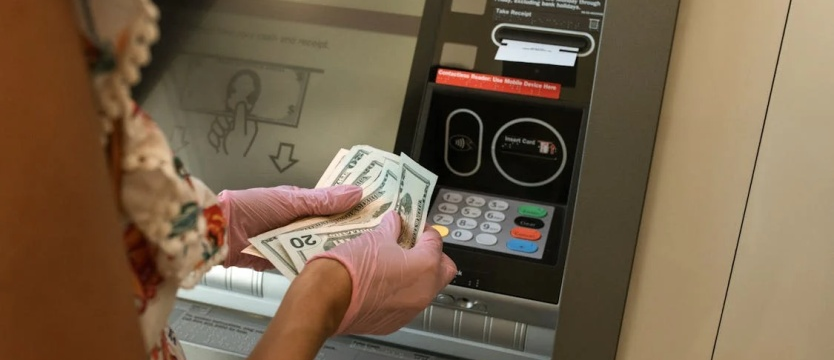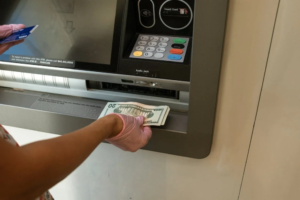Menu
UNITED STATES OF AMERICA

HSPS Special Operations & OFF DUTY POLICE OFFICE

January 22, 2025
- By: seoadmin
- Our Blog
- comments 0
Boosting ATM Security: Practical Steps to Mitigate Risks
Automated Teller Machines (ATMs) are an essential part of modern banking, providing convenience and accessibility to millions of users. However, their widespread use makes them an attractive target for criminals.
Ensuring ATM security is critical for protecting financial assets and maintaining customer trust. This blog explores practical steps banks, financial institutions, and ATM operators can take to boost ATM security.
1. Enhance Physical Security Measures
Physical security is the first line of defense against ATM-related crimes such as theft and vandalism. Installing ATMs in well-lit, high-traffic areas deter criminals.
Banks should also equip machines with tamper-proof enclosures, shatterproof glass, and robust locking mechanisms. For additional protection, consider deploying professional camera monitoring services and security professionals at high-risk locations.
2. Implement Strong Access Controls
Unauthorized access to an ATM’s internal components can lead to skimming, malware installation, or cash theft. To prevent this, enforce strict access controls. Use encrypted keypads, multi-factor authentication, and biometric systems for personnel who service the machines. Regularly update access credentials and deactivate them promptly if employees leave the organization.
3. Invest in Anti-Skimming Devices
Skimming remains a significant threat to ATM security, as criminals use devices to capture cardholder data. Anti-skimming technology, such as jamming signals or electromagnetic shields, can disrupt skimming devices. Some ATMs are equipped with sensors that detect and alert operators when skimming devices are installed.

4. Upgrade Software and Firmware Regularly
Outdated software and firmware can expose ATMs to cyberattacks, including malware infections. Ensure all ATMs operate on up-to-date software that complies with the latest security standards. Regular patches and updates are vital to address vulnerabilities and maintain robust defense mechanisms against hackers.
5. Monitor Network Traffic for Suspicious Activity
ATMs connected to a network are vulnerable to cyberattacks. Network monitoring tools can help detect unusual activity, such as unauthorized access attempts or data transmission anomalies. Early detection of network intrusions enables swift responses, minimizing potential damage.
6. Educate Customers on ATM Safety
Educating customers about safe ATM usage is a proactive way to mitigate risks. Inform users to shield keypads while entering PINs, avoid using ATMs in isolated areas, and report suspicious devices or activity immediately. Financial institutions can use campaigns, brochures, and digital communication to disseminate these tips.
7. Conduct Regular Security Audits
Comprehensive audits help identify vulnerabilities in ATM infrastructure. Regular inspections should include testing physical security features, reviewing software integrity, and evaluating network defenses. Engage professional security consultants or penetration testers to simulate attacks and uncover hidden risks.
8. Establish an Incident Response Plan
Even with the best security measures, incidents may occur. Having a well-defined response plan is crucial to minimizing damage. This plan should include steps for isolating compromised ATMs, notifying authorities, and communicating with affected customers. Regular drills and updates ensure that teams are prepared to respond effectively.

9. Leverage AI and Machine Learning for Threat Detection
Artificial Intelligence (AI) and Machine Learning (ML) technologies can enhance ATM security by identifying unusual patterns and potential threats in real-time. These tools can analyze large datasets to detect anomalies, such as repeated failed PIN attempts or unusual transaction volumes, and alert operators to take immediate action.
10. Adopt End-to-End Encryption
Securing the communication between ATMs and banking networks is vital. End-to-end encryption ensures that sensitive data, such as cardholder information and transaction details, remain protected from interception during transmission. Using secure communication protocols like TLS (Transport Layer Security) further reduces the risk of data breaches.
11. Collaborate with Law Enforcement and Industry Peers
Establishing partnerships with law enforcement agencies and other financial institutions can strengthen security efforts. Sharing information about emerging threats, fraud trends, and mitigation strategies enables a collective response to criminal activities. Additionally, participation in industry forums and initiatives fosters innovation in ATM security technologies.
ATM security requires a multifaceted approach to address physical and digital threats. Regular audits, timely software updates, and an effective incident response plan further bolster security. Prioritizing these measures safeguards financial assets and strengthens customer trust and confidence in the banking system.
Secure Your ATMs with HSPS Special Operations
Protect your ATMs from threats with HSPS Special Operations’ advanced ATM security in Cincinnati. From professional camera monitoring services to security professionals, we provide tailored services to keep your assets safe. Partner with us for unmatched expertise and 24/7 support. Contact HSPS Special Operations today for a safer banking experience!